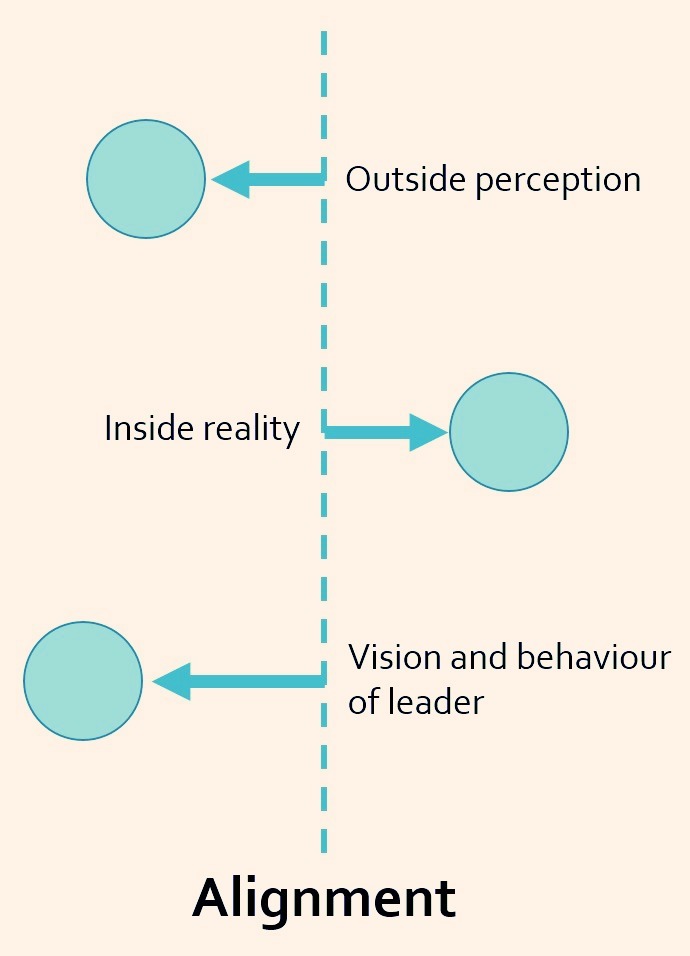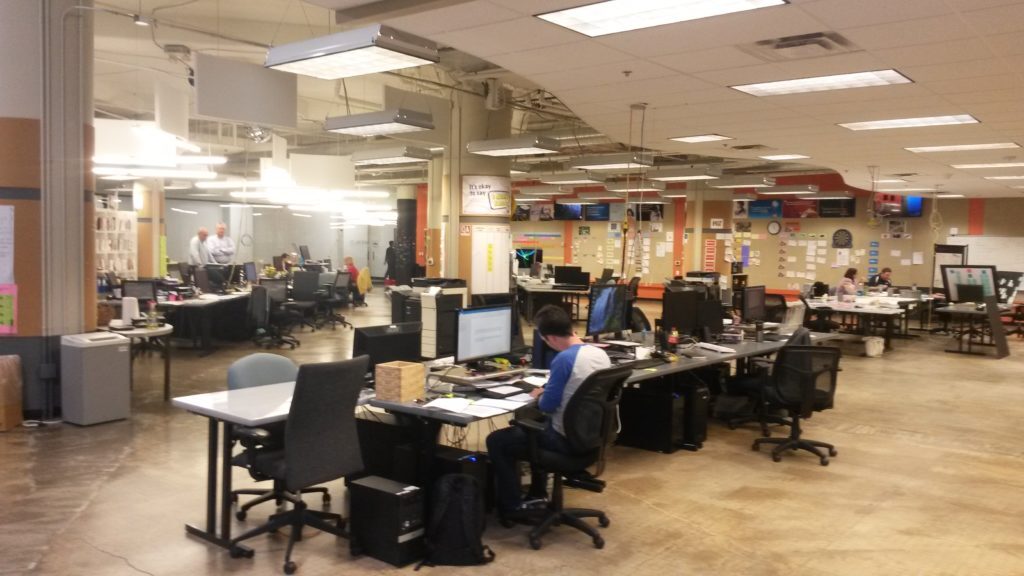Richard Sheridan's 4 Practical Lessons to Create a Highly Engaged Workplace

After a fast morning coffee in downtown Ann Arbor we are about to visit Menlo Innovations for our final bucket list visit of this USA tour. We enter Menlo Innovations just on time, since the morning stand-up is about to start.
Circa 50 people gather in a big circle and pass around a Viking helmet. We join the circle and witness their famous daily ritual. The moment you hold the helmet you are supposed to introduce yourself quickly and basically try to answer two main questions: What are you working on today? What help do you need? When it's our turn, we share our story and let the Menlonians (employees of Menlo) know we could use their help in learning to understand their unique organization.
The stand-up is a quick ritual to get everyone up to speed, as it typically takes only about 12 minutes. Instead of the cumbersome weekly status meetings that take ages and are only interesting for a small part of the attendees, the stand-up provides an easy, quick and informal update of who's working on what. A great example of how the stand-up can help to solve problems quick and easy is demonstrated right in front of us. An employee mentions she is currently struggling with a difficult Fast Fourier transform math issue and asks if anyone can help her out. A colleague responds instantly. Her husband is a math Professor at the University of Michigan and loves to solve difficult math issues for fun. She promises to pass on the issue to him and in this way the problem is easily solved. This single moment shows the simplicity and power of stand-ups (when executed in the right way).
Meet Richard Sheridan
After the stand-up we meet up with Richard Sheridan. Richard is the founder and CEO of Menlo Innovations. Menlo is a software design and development company that has a radically different approach to its workplace culture. At Menlo they build a culture that tries to remove the typical fear and ambiguity that often make traditional workplaces miserable. They replace it by making joy the ultimate goal of their work, as nicely described in Richard's book Joy Inc. They are all on a mission to bring joy in the lives of themselves and their customers. Richard envisions his role within Menlo as being the Chief Storyteller, and a great storyteller he is!
Spending the day with Richard and hearing his stories while at the same time talking to the employees and walking around the office, we learn some valuable lessons from this unique organization. Here's the four main takeaways that can help you to create a more engaging workplace.
1. Walk the talk
Richard believes that the founders and leaders of organizations have a big and important role to play. To ensure the right company culture, it's important for the leader to be consistently setting the right example. By continuously demonstrating the vision and values of the organization, one can actually become the person leading the rest of the organization. If either their's any inconsistency or a lack of clarity in the actions and words of a leader, the organization will start to doubt its leader.

As Richard draws the model above, he explains the vision and behavior of the leader should always be in line with the inside reality of the organization. The closer the data points are located near the center, the more powerful the leader and the culture of an organization. In a sense, this simple model can be used to define if your alignment is good. What you often see in traditional organizations is that they have established a fancy mission and values, but in reality no-one ever takes them into account. This undermines the trust and faith of visitors, employees and customers of an organization and in turn results in disengagement.
Richard explains that for them it was important to find this sweet spot. Richard: "Once we found it we could communicate it to the outside world in a powerful way." The result: engaged employees and lots of people (like us) who want to learn more about their unique company culture.
2. Be part of the team

As we've seen in most organizations we visit, the CEO is not in a fancy top-floor office away from the rabble. He is working close to the action and is continuously connected to the employees. Richard's desk is in between the programmers and is often moved (by the employees) to a new place. Richard enjoys being close to the employees and mentions some of the benefits:
- I know what's going on in the company
- Employees overhear what I'm working on
- Employees can easily come to me for questions or ideas
- I can easily talk to employees for questions or ideas
For any discussions that need to be held behind closed doors, they have a separate office they can use.*
3. Experiment and make mistakes faster
One of Menlo's core values is make mistakes faster. Richard: "Here at Menlo we encouraged people to just run the experiment and to make mistakes faster. If it doesn't work we can always go back. But if we never try anything new we will never learn anything new either".
Experimenting is synonymous to making mistakes according to Richard. Mistakes will happen but for leadership it is important to intervene as little as possible. Richard: "Just watch it and let them play. It needs to grow. Let go, let it grow and watch it." This will lead to a culture where employees are encouraged to work in their own way and to feel responsible for their work.
Richard: "Teams start caring about the project just as much as I do. When they know they can do something to make it better, they will not complain but are motivated to make it happen." At Menlo Innovations it is shown that this doesn't only support constant learning but also elevates product quality, employee satisfaction and customer loyalty.*
4. Team up!
After our talks with Richard we wander around the workplace and chat with a number of Menlonians. The most remarkable thing we observe is the fact that at Menlo no one works alone. The developers and programmers work in pairs. All around the wide-open floor we see pairs of 'buddies' working behind one PC. As one of Menlo's developers explains: "We change buddies every week, which keeps me fresh. I could be assigned to a different project from one week to another. This way everyone knows what the others are doing, learns from each other, and no problem occurs if somebody is sick or absent."
Working with the pairing system helps them avoiding the creation of so called 'towers of knowledge' in their organization. The buddies help each other to get unstuck and it allows them to correct each other's mistakes. Therefore it improves the overall accuracy. Also, the buddies actively practice to give feedback to each other on a daily basis. One of the Menlonians; "I talk about my day with my buddy everyday. It is a habit now. Most of the feedback is positive and easy to share. But the moment it needs to be hard it's easier to share since we are so used to giving each other feedback everyday."
While we wander around the workplace we realize that working in pairs is actually not that strange. Police agents and pilots have been working in pairs for decades. The positive effects Richard experiences at Menlo:
- It pushes personal growth
- It tears down towers of knowledge
- Teams make less coding errors
- It improves constant learning
The end of our first USA trip
These four takeaways and the visit to Menlo Innovations mark the end of our Bucket List visits in the Eastern part of the US. It has been an amazing trip in which we learned a lot and met with a long list of inspiring people. It's almost time to head back to Holland and reflect on everything we've learned. Not before we visit Detroit to meet up with office design company dPOP!. They are radically changing the way offices are designed. We'd love to learn from them how they create more engaging workplaces by changing the physical aspects of offices. More on that later!


